-
 Bitcoin
Bitcoin $117900
0.31% -
 Ethereum
Ethereum $3766
0.28% -
 XRP
XRP $3.176
-0.31% -
 Tether USDt
Tether USDt $1.000
0.00% -
 BNB
BNB $795.6
1.51% -
 Solana
Solana $186.8
-1.09% -
 USDC
USDC $0.9999
-0.01% -
 Dogecoin
Dogecoin $0.2353
-1.33% -
 TRON
TRON $0.3226
1.49% -
 Cardano
Cardano $0.8172
-1.08% -
 Sui
Sui $4.178
3.06% -
 Hyperliquid
Hyperliquid $43.05
-3.39% -
 Stellar
Stellar $0.4367
-0.57% -
 Chainlink
Chainlink $18.62
1.47% -
 Hedera
Hedera $0.2828
6.63% -
 Bitcoin Cash
Bitcoin Cash $584.7
5.65% -
 Avalanche
Avalanche $24.81
2.53% -
 Litecoin
Litecoin $112.8
-0.88% -
 UNUS SED LEO
UNUS SED LEO $8.975
-0.08% -
 Shiba Inu
Shiba Inu $0.00001395
-1.07% -
 Toncoin
Toncoin $3.285
-1.05% -
 Ethena USDe
Ethena USDe $1.001
0.01% -
 Polkadot
Polkadot $4.123
0.76% -
 Uniswap
Uniswap $10.49
-0.18% -
 Monero
Monero $326.5
0.14% -
 Dai
Dai $0.9999
-0.02% -
 Bitget Token
Bitget Token $4.576
0.34% -
 Pepe
Pepe $0.00001247
-1.55% -
 Cronos
Cronos $0.1400
3.77% -
 Aave
Aave $295.1
-0.73%
How to verify RSI oversold zone rebound signal?
To verify an RSI oversold rebound signal, look for bullish divergence, increased volume, and confirm with other indicators like MACD or Bollinger Bands.
Jun 10, 2025 at 01:28 pm
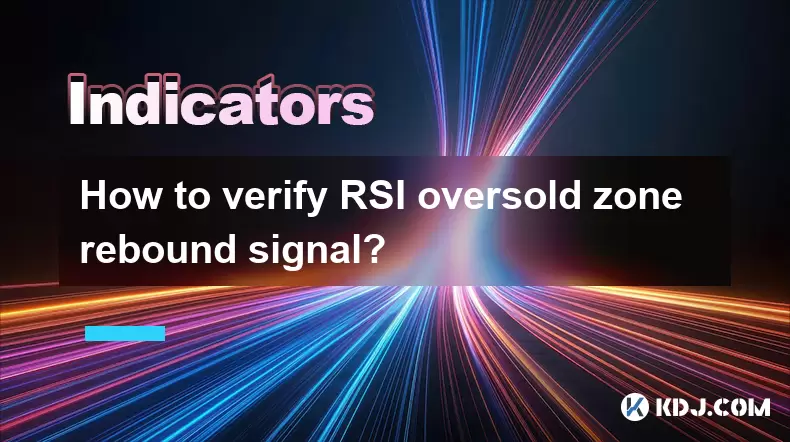
How to Verify RSI Oversold Zone Rebound Signal?
The Relative Strength Index (RSI) is a popular momentum oscillator used in technical analysis to measure the speed and change of price movements. When the RSI enters an oversold zone, it can signal a potential rebound in the asset's price. Verifying an RSI oversold zone rebound signal involves several steps and considerations to ensure the signal's reliability. This article will guide you through the process of verifying such signals within the context of the cryptocurrency market.
Understanding the RSI and Oversold Zones
The RSI is calculated based on the average gains and losses of an asset over a specific period, typically 14 days. The RSI value ranges from 0 to 100. A value below 30 is generally considered to indicate an oversold condition, suggesting that the asset may be undervalued and due for a price increase. Conversely, a value above 70 indicates an overbought condition, suggesting the asset may be overvalued and due for a price decrease.
To effectively use the RSI in cryptocurrency trading, it's essential to understand that oversold zones do not guarantee an immediate rebound. They simply indicate that the asset's price has fallen rapidly, and a correction might be imminent.
Identifying an RSI Oversold Signal
To identify an RSI oversold signal, follow these steps:
- Monitor the RSI Indicator: Use a charting platform that includes the RSI indicator. Set the RSI period to 14 days, which is the standard setting.
- Watch for RSI Values Below 30: When the RSI value falls below 30, it enters the oversold zone. This is your initial signal that the asset might be due for a rebound.
- Confirm with Price Action: Look at the price chart to see if the asset's price has indeed fallen significantly. A sharp decline in price alongside an RSI value below 30 strengthens the oversold signal.
Verifying the RSI Oversold Rebound Signal
Verifying an RSI oversold rebound signal involves additional steps to increase the confidence in the signal. Here's how you can do it:
- Look for Divergence: Check for bullish divergence between the price and the RSI. Bullish divergence occurs when the price makes a lower low, but the RSI makes a higher low. This can be a strong indication that the downward momentum is weakening, and a rebound may be forthcoming.
- Observe Volume: Trading volume can provide additional confirmation. An increase in volume as the RSI moves out of the oversold zone can indicate strong buying interest and support a potential rebound.
- Use Additional Indicators: Consider using other technical indicators, such as the Moving Average Convergence Divergence (MACD) or Bollinger Bands, to confirm the RSI signal. If these indicators also suggest a potential upward movement, it strengthens the case for a rebound.
Setting Up a Trade Based on the RSI Oversold Rebound Signal
Once you have verified the RSI oversold rebound signal, you can set up a trade. Here’s how to do it:
- Choose an Entry Point: Enter the trade when the RSI moves above 30, signaling the end of the oversold condition. This can be your entry point for a long position.
- Set a Stop-Loss: To manage risk, set a stop-loss order below the recent low. This will help limit potential losses if the price continues to fall.
- Determine a Take-Profit Level: Set a take-profit order at a level where you believe the price will reach based on your analysis. This could be a previous resistance level or a Fibonacci retracement level.
Monitoring the Trade
After entering the trade, it's crucial to monitor the position closely. Here are some steps to follow:
- Watch the RSI: Keep an eye on the RSI to see if it continues to rise, indicating sustained upward momentum. If the RSI starts to decline again, it might be time to exit the trade.
- Check Price Action: Monitor the price action to ensure it continues to move in your favor. If the price starts to reverse, consider closing the position to lock in profits or limit losses.
- Adjust Stop-Loss and Take-Profit Levels: As the trade progresses, you may need to adjust your stop-loss and take-profit levels to reflect new market conditions and protect your profits.
Common Pitfalls and How to Avoid Them
When using the RSI to identify oversold rebound signals, there are several common pitfalls to be aware of:
- False Signals: The RSI can generate false signals, especially in highly volatile markets like cryptocurrencies. To mitigate this, always use additional indicators and confirmations.
- Over-reliance on RSI: Relying solely on the RSI without considering other factors can lead to poor trading decisions. Always use the RSI in conjunction with other technical and fundamental analyses.
- Ignoring Market Context: The broader market context, including trends and news events, can significantly impact the effectiveness of RSI signals. Always consider the bigger picture before acting on an RSI signal.
Frequently Asked Questions
Q: Can the RSI be used for all cryptocurrencies?
A: Yes, the RSI can be applied to any cryptocurrency. However, the effectiveness of the RSI may vary depending on the liquidity and volatility of the specific cryptocurrency. More liquid and less volatile assets tend to produce more reliable RSI signals.
Q: How often should I check the RSI for oversold signals?
A: The frequency of checking the RSI depends on your trading strategy. For short-term traders, checking the RSI multiple times a day may be necessary. For longer-term investors, checking the RSI on a daily or weekly basis might be sufficient.
Q: What other indicators can I use alongside the RSI to confirm oversold rebound signals?
A: Besides the MACD and Bollinger Bands mentioned earlier, other useful indicators include the Stochastic Oscillator, On-Balance Volume (OBV), and Average Directional Index (ADX). These can provide additional insights into momentum, volume, and trend strength.
Q: Is it possible to automate the process of identifying and verifying RSI oversold rebound signals?
A: Yes, it is possible to automate this process using trading bots and algorithms. These tools can monitor the RSI and other indicators in real-time and execute trades based on predefined criteria. However, it's important to thoroughly test and monitor any automated system to ensure its reliability and effectiveness.
Disclaimer:info@kdj.com
The information provided is not trading advice. kdj.com does not assume any responsibility for any investments made based on the information provided in this article. Cryptocurrencies are highly volatile and it is highly recommended that you invest with caution after thorough research!
If you believe that the content used on this website infringes your copyright, please contact us immediately (info@kdj.com) and we will delete it promptly.
- Cryptos to Watch in 2025: Punisher Coin, Chainlink, and the Altcoin Arena
- 2025-07-27 18:30:13
- Bitcoin, Altcoins, Rebound: Navigating the Crypto Comeback Trail
- 2025-07-27 18:30:13
- Ethereum, Bitcoin, and Altcoins: A Shift in Crypto Tides?
- 2025-07-27 19:10:13
- Windtree Therapeutics' Bold BNB Strategy: A $520 Million Crypto Play
- 2025-07-27 19:10:13
- Solana, Staking, and Unilabs: What's the Buzz in the Crypto Space?
- 2025-07-27 16:50:13
- VeChain, HBAR, Remittix: Navigating the Crypto Landscape in 2025
- 2025-07-27 17:10:12
Related knowledge
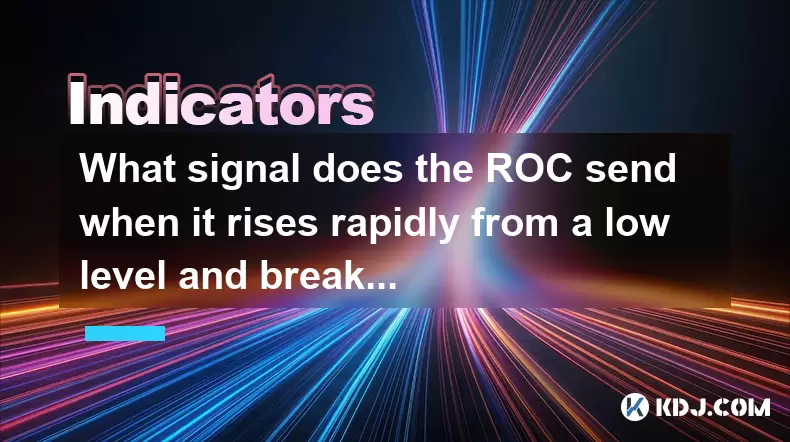
What signal does the ROC send when it rises rapidly from a low level and breaks through the zero axis?
Jul 27,2025 at 10:15am
Understanding the Rate of Change (ROC) IndicatorThe Rate of Change (ROC) is a momentum-based oscillator used in technical analysis to measure the perc...
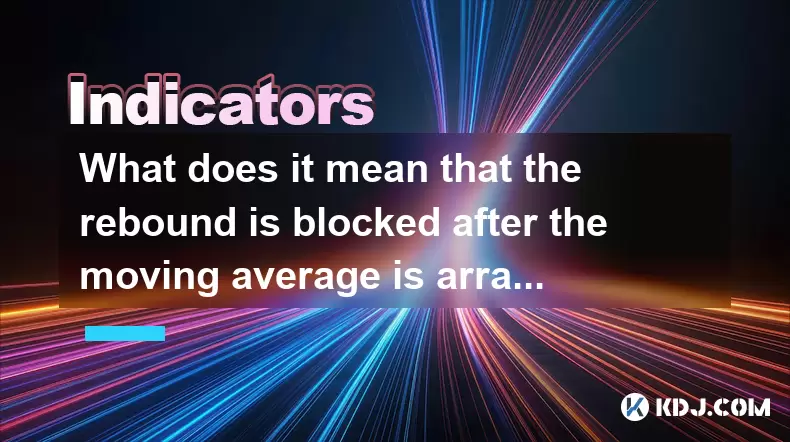
What does it mean that the rebound is blocked after the moving average is arranged in a short position for the first time?
Jul 26,2025 at 10:51am
Understanding the Short-Term Moving Average ConfigurationWhen traders refer to a 'short position arrangement' in moving averages, they are describing ...
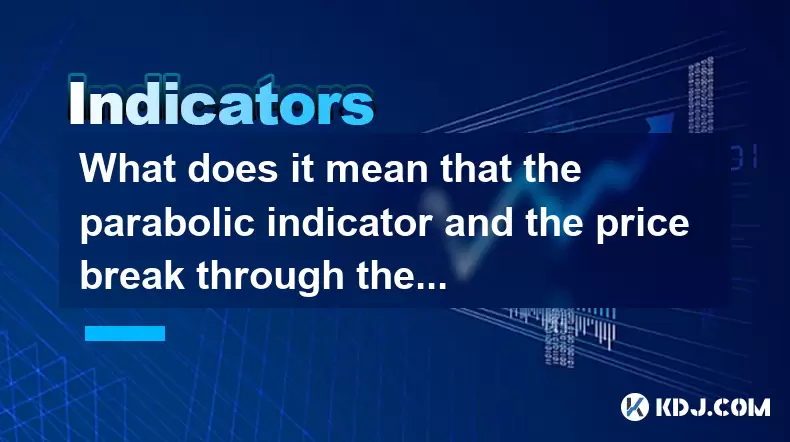
What does it mean that the parabolic indicator and the price break through the previous high at the same time?
Jul 26,2025 at 07:22pm
Understanding the Parabolic Indicator (SAR)The Parabolic SAR (Stop and Reverse) is a technical analysis tool developed by J. Welles Wilder to identify...
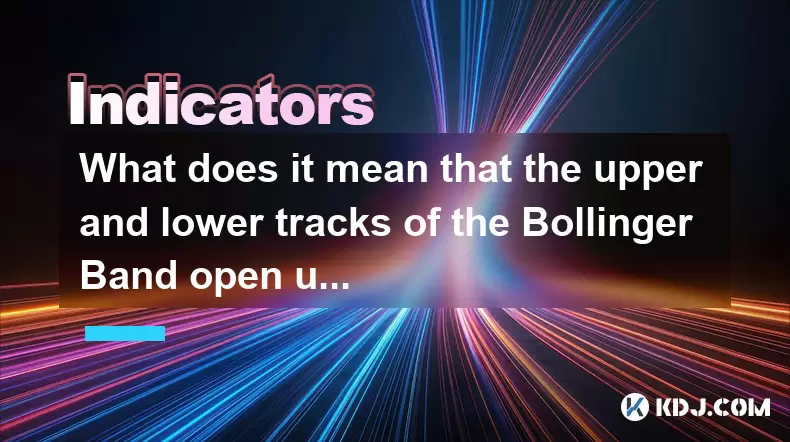
What does it mean that the upper and lower tracks of the Bollinger Band open upward at the same time?
Jul 27,2025 at 02:49pm
Understanding the Bollinger Band StructureThe Bollinger Band is a widely used technical analysis tool developed by John Bollinger. It consists of thre...
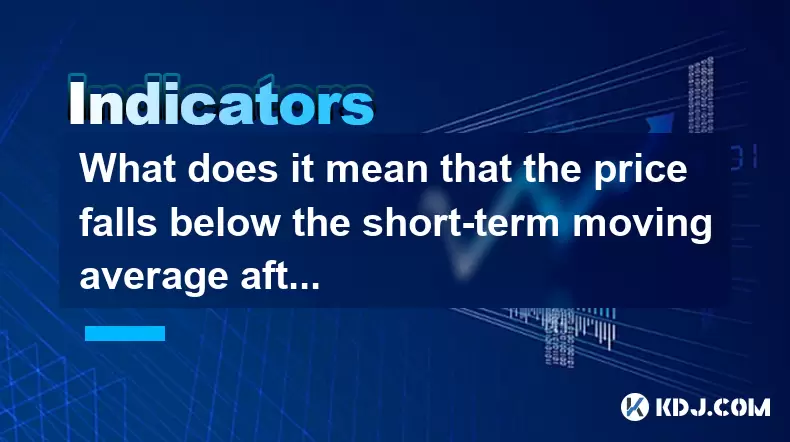
What does it mean that the price falls below the short-term moving average after the RSI top divergence?
Jul 26,2025 at 11:01pm
Understanding RSI Top Divergence in Cryptocurrency TradingThe Relative Strength Index (RSI) is a momentum oscillator widely used in cryptocurrency tra...
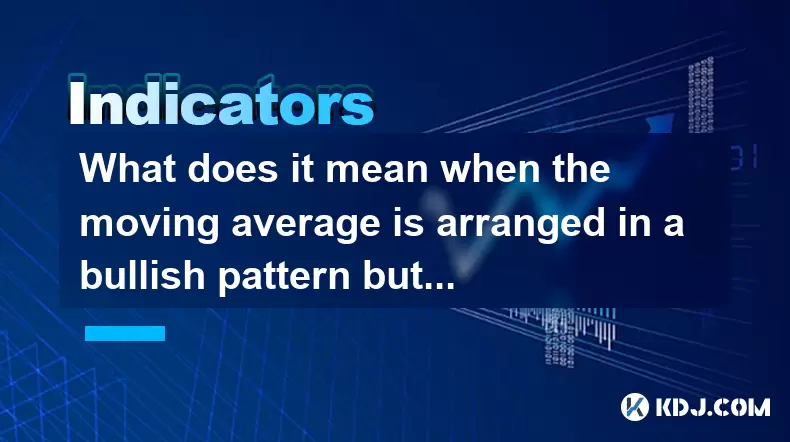
What does it mean when the moving average is arranged in a bullish pattern but the MACD bar is shortened?
Jul 27,2025 at 06:07am
Understanding the Bullish Moving Average PatternWhen traders observe a bullish moving average pattern, they typically refer to a configuration where s...

What signal does the ROC send when it rises rapidly from a low level and breaks through the zero axis?
Jul 27,2025 at 10:15am
Understanding the Rate of Change (ROC) IndicatorThe Rate of Change (ROC) is a momentum-based oscillator used in technical analysis to measure the perc...

What does it mean that the rebound is blocked after the moving average is arranged in a short position for the first time?
Jul 26,2025 at 10:51am
Understanding the Short-Term Moving Average ConfigurationWhen traders refer to a 'short position arrangement' in moving averages, they are describing ...

What does it mean that the parabolic indicator and the price break through the previous high at the same time?
Jul 26,2025 at 07:22pm
Understanding the Parabolic Indicator (SAR)The Parabolic SAR (Stop and Reverse) is a technical analysis tool developed by J. Welles Wilder to identify...

What does it mean that the upper and lower tracks of the Bollinger Band open upward at the same time?
Jul 27,2025 at 02:49pm
Understanding the Bollinger Band StructureThe Bollinger Band is a widely used technical analysis tool developed by John Bollinger. It consists of thre...

What does it mean that the price falls below the short-term moving average after the RSI top divergence?
Jul 26,2025 at 11:01pm
Understanding RSI Top Divergence in Cryptocurrency TradingThe Relative Strength Index (RSI) is a momentum oscillator widely used in cryptocurrency tra...

What does it mean when the moving average is arranged in a bullish pattern but the MACD bar is shortened?
Jul 27,2025 at 06:07am
Understanding the Bullish Moving Average PatternWhen traders observe a bullish moving average pattern, they typically refer to a configuration where s...
See all articles

























































































